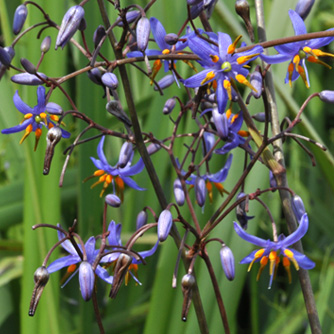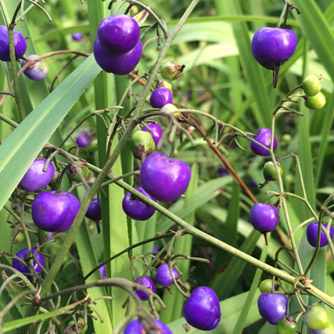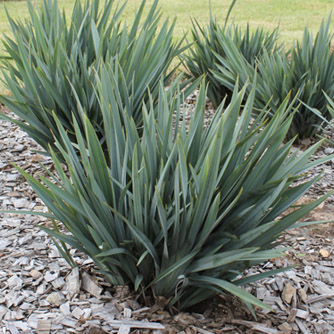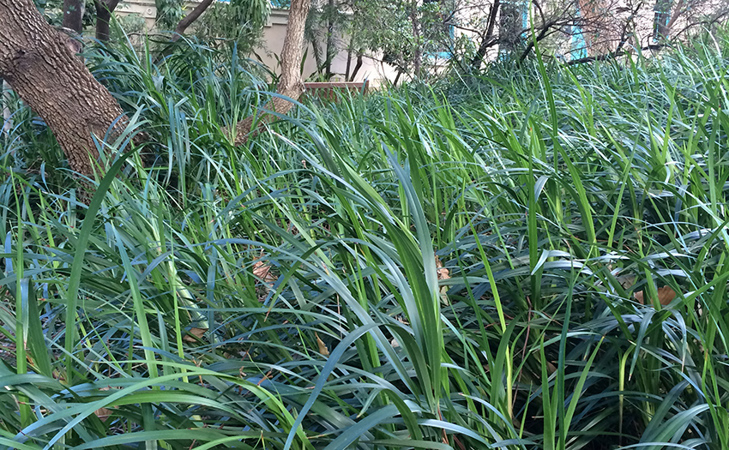Dianellas
BackDianellas, or flax lillies, are a range of reliable plants that are grown for their strappy leaves, pretty blue flowers and bright purple berries. There are over a dozen native species of these tough clumping plants which are perfect for mass plantings, native gardens or filling that difficult spot.
There are many varieties of dianella available now with more compact growth and in varying heights and foliage colour (from light to dark green, grey and even striped). Look out for some of these varieties to jazz up your garden:
- Dianella caerulea ‘Breeze’ with light green compact foliage and lovely long-lasting blue and yellow flowers.
- Dianella ‘Clarity Blue’ is a new and improved variety that has stunning grey foliage for year round interest and can even cope with short periods of wet feet.
- Dianella tasmanica ‘Blaze’ produces purplish green foliage for most of the year which makes it a great contrast or feature plant.

The dainty flowers of Dianella caerulea
How To Grow Dianellas
Dianellas will grow in full sun to part shade and perform best in rich fertile soils. Avoid planting in heavy, clay soil as they prefer good drainage. Apply gypsum to the soil before planting if you are unsure. They will tolerate poor soils but it’s best to enrich them with compost or manure before planting for better growth. Water in well with OCP eco-seaweed to settle them in and apply some mulch to keep weeds at bay and help retain moisture.
Once established, dianellas are drought and cold tolerant and will fill a spot quickly as they are fast growing. They produce underground stems called rhizomes that grow horizontally in the soil and then come to the surface as new shoots a short distance from the main plant. This clumping trait makes them useful for erosion control in exposed soils but without being invasive.
Fertilising Dianellas
To encourage growth in young plants apply OCP eco-seaweed and OCP eco-aminogro every 2-4 weeks throughout spring, summer and autumn. Established dianellas only require fertilising in spring with manure, compost or a certified organic pelletised fertiliser unless they’re growing poor soils. In poor soils keep up with the eco-seaweed and eco-aminogro once a month.

The colourful, bird attracting berries of Dianella caerulea
Maintenance of Dianellas
Remove flower spikes at the base of the plant once the berries are finished and any dead or yellowing leaves periodically. Clumps can be thinned out or dug up and divided to provide new plants if they become too congested. The best time of year to do this autumn but they’re fairly forgiving if you need to do it at other times. Ensure new plants are watered in with OCP eco-seaweed solution to reduce the shock.
Pest and Diseases of Dianellas
Dianellas are relatively pest and disease free but occasionally a few problems can crop up:
- Mealybugs – these sap suckers can attack plants especially if they’ve been stressed by regular overwatering. If mealybugs appear spray thoroughly with OCP eco-neem.
- Mites or aphids – you might get small outbreaks of these pests but they can be controlled with OCP eco-oil.
- Scale - if these sap suckers appear they can be controlled with sprays of horticultural oil.

Dianella 'Clarity Blue' with its lovely grey foliage



